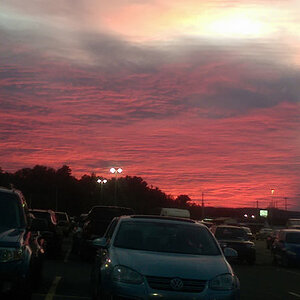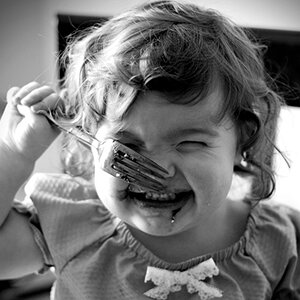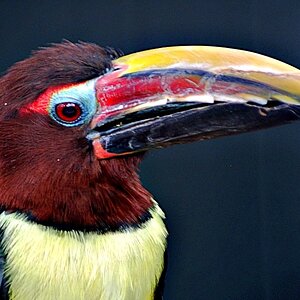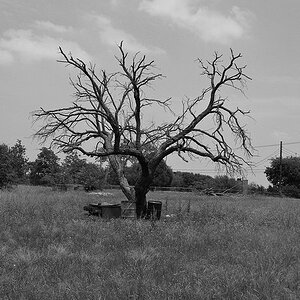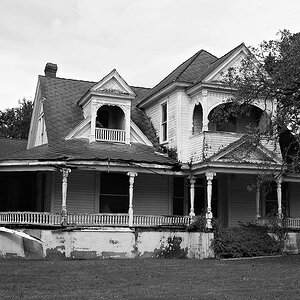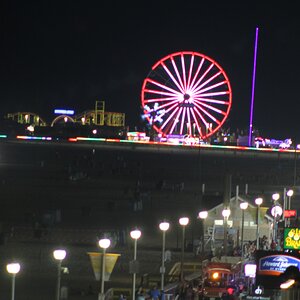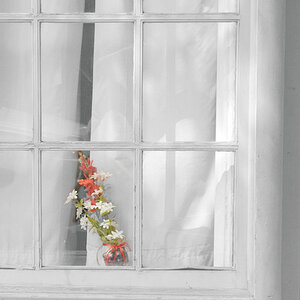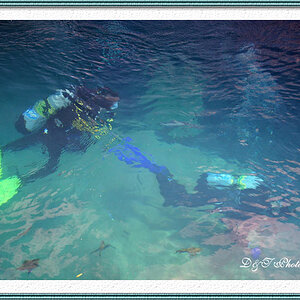Tim Tucker
No longer a newbie, moving up!
- Joined
- Mar 23, 2015
- Messages
- 660
- Reaction score
- 579
- Can others edit my Photos
- Photos NOT OK to edit
I will be very clear from the outset that this thread is about the title. In it I shall deconstruct an image that's clearly in the public domain. The topic of the image is of no concern, and neither really should the person who posted it be.
I have chosen this image, and think I am fair in doing so because though it claims to show the truth it is actually loaded with visual tricks and optical illusion, almost too many for one article alone . The point is to show that with careful observation you can see this and that it will help your photography, namely in helping you develop a photographic eye by learning how to apply careful observation.
. The point is to show that with careful observation you can see this and that it will help your photography, namely in helping you develop a photographic eye by learning how to apply careful observation.
Too many photographers understand the absolute and measurable nature of cameras but make the incorrect assumption that this is transferred to the image. It is not. The image, like the original scene, is viewed by the human eye and the human eye does not see in absolute values but only relative ones. If we fall into this trap of thinking that our vision is absolute and that what we see is actually there then we tend to be lazy with our vision and only glance at things instead of looking carefully. When we glance at things we don't see them properly and often jump to conclusions and assumptions about what we've seen which we then see as fact, (because our vision is absolute what we see is really there). This leads to another problem in that once we decide that the quick casual glance has given us the truth we then cease to look any further, we become effectively blind to anything beyond it. We fail to see anything new because we only look for what we understand and once found we stop looking.
So learning how to see is about applying careful observation without trying to fit it into the logic and rules that you understand. It's about seeing beyond what you understand, spotting something new and admitting that you don't understand it. Then you open your mind to the possibility of learning something new.
As stated at the beginning this article is about showing that your vision and how you see images is not absolute, and that by understanding this it is relatively easy to fool and deceive the human eye. If you then turn it on it's head it will also show you how by understanding how we see you can apply this to give your images extra 'pop'.
Mostly though it's about showing you that even when looking at images your vision is relative. The illusions presented do not work when only one side of the image is presented. They work entirely because of your relative vision. You do not see the absolute qualities of either side of the image, you only see the differences between them. I will also show you that by just glancing at things you can sometimes miss the blindingly obvious.
What the image declares it shows is that on side has more 'pop' due to micro-contrast and the other has a yellow cast due to some scientific stuff that I'm not concerned with. All I'm going to show you are the illusions employed and how they work.
The image:
INFERIOR 105MM 1.4 NIKKOR
Now the blindingly obvious things are first that the 'pop' on the left side is not so much due to and difference in micro-contrast but of the addition of a drop shadow:

Once pointed out it's obvious to see. But you'd be surprised at just how many do not see it. The effect is to add 3D depth to an image and the way it does it is through relative acutance. The edge on the left is sharp, it has a high contrast or acutance while on the right it fades to nothing and so has a low contrast or acutance, (remember this is just a 2D representation). We will always try and see the sharper edge as being in front of the softer one and this is the real trick of '3D pop', a difference in relative acutance and not really the property of any lens, though it is easier to reproduce with some than others. It works best with when you have sharply defined, or focussed edge against a softer or unfocussed background.
The other obvious illusion is the text. On an image that is claiming to be SOOC it is surprising how much extra colour has been added in the text. This is all part of the image though many read the words and apply their meaning without seeing the effect of these colours on the image as a whole. More on how the colours work later, I just wanted to show that you must look at images as a whole and not separate elements within them. Here is all that added colour:

Now for the illusion in the colour, how one side looks yellow and washed out in comparison. To show you this illusion I shall construct a simple representation of the image where both sides are exactly the same and try to explain why we see them as different. Anybody wanting to learn more should definitely read up on some basic colour theory, as this is a basic illusion.
I will start by pointing out some things about the differences in the image that you will see with careful observation:

Now if I place these side by side with the drop shadow you will see how simultaneous contrast works, remember that it is exactly the same gradient on both sides:

Yet the left side looks bluer and the right more yellow. If we then observe the effects of extra colour added as text, and please note that it's yellow, red, and blue that have been added to the left and just yellow to the right. We can see the effect it has on what started life as exactly the same gradient:

We can see at a glance that the image on the left stands out, has greater depth of colour and contrast than the one on the right, which looks yellow and washed out in comparison. But if we look with more than a glance and use careful observation we can see that they are in fact exactly the same. When we learn to look more closely we can see and understand these effects and apply them to our own images. You can therefore make your images more like the left side than the right by just starting with some careful observation and an open mind to learn.
Just to show you how this would look even when there is no drop shadow or difference in cropping, again exactly the same gradient on both sides:

I have chosen this image, and think I am fair in doing so because though it claims to show the truth it is actually loaded with visual tricks and optical illusion, almost too many for one article alone
Too many photographers understand the absolute and measurable nature of cameras but make the incorrect assumption that this is transferred to the image. It is not. The image, like the original scene, is viewed by the human eye and the human eye does not see in absolute values but only relative ones. If we fall into this trap of thinking that our vision is absolute and that what we see is actually there then we tend to be lazy with our vision and only glance at things instead of looking carefully. When we glance at things we don't see them properly and often jump to conclusions and assumptions about what we've seen which we then see as fact, (because our vision is absolute what we see is really there). This leads to another problem in that once we decide that the quick casual glance has given us the truth we then cease to look any further, we become effectively blind to anything beyond it. We fail to see anything new because we only look for what we understand and once found we stop looking.
So learning how to see is about applying careful observation without trying to fit it into the logic and rules that you understand. It's about seeing beyond what you understand, spotting something new and admitting that you don't understand it. Then you open your mind to the possibility of learning something new.
As stated at the beginning this article is about showing that your vision and how you see images is not absolute, and that by understanding this it is relatively easy to fool and deceive the human eye. If you then turn it on it's head it will also show you how by understanding how we see you can apply this to give your images extra 'pop'.
Mostly though it's about showing you that even when looking at images your vision is relative. The illusions presented do not work when only one side of the image is presented. They work entirely because of your relative vision. You do not see the absolute qualities of either side of the image, you only see the differences between them. I will also show you that by just glancing at things you can sometimes miss the blindingly obvious.
What the image declares it shows is that on side has more 'pop' due to micro-contrast and the other has a yellow cast due to some scientific stuff that I'm not concerned with. All I'm going to show you are the illusions employed and how they work.
The image:
INFERIOR 105MM 1.4 NIKKOR
Now the blindingly obvious things are first that the 'pop' on the left side is not so much due to and difference in micro-contrast but of the addition of a drop shadow:
Once pointed out it's obvious to see. But you'd be surprised at just how many do not see it. The effect is to add 3D depth to an image and the way it does it is through relative acutance. The edge on the left is sharp, it has a high contrast or acutance while on the right it fades to nothing and so has a low contrast or acutance, (remember this is just a 2D representation). We will always try and see the sharper edge as being in front of the softer one and this is the real trick of '3D pop', a difference in relative acutance and not really the property of any lens, though it is easier to reproduce with some than others. It works best with when you have sharply defined, or focussed edge against a softer or unfocussed background.
The other obvious illusion is the text. On an image that is claiming to be SOOC it is surprising how much extra colour has been added in the text. This is all part of the image though many read the words and apply their meaning without seeing the effect of these colours on the image as a whole. More on how the colours work later, I just wanted to show that you must look at images as a whole and not separate elements within them. Here is all that added colour:
Now for the illusion in the colour, how one side looks yellow and washed out in comparison. To show you this illusion I shall construct a simple representation of the image where both sides are exactly the same and try to explain why we see them as different. Anybody wanting to learn more should definitely read up on some basic colour theory, as this is a basic illusion.
I will start by pointing out some things about the differences in the image that you will see with careful observation:
- Please note the uneven colour temperature visible in both sides. You will see that the right side of the image appears to be lit by daylight and the left by reflected or artificial light. The effect of this is that the left side is warmer and the right side is cooler.
- Notice the cropping. See how the background has been left un-interrupted along the right edge of the left image and has been cropped in the right image. This sets up two important points about the illusion. On the boundary between the two images there is as much of the cooler colours as possible and by simple cropping there is less blue on the right side.
Now if I place these side by side with the drop shadow you will see how simultaneous contrast works, remember that it is exactly the same gradient on both sides:
Yet the left side looks bluer and the right more yellow. If we then observe the effects of extra colour added as text, and please note that it's yellow, red, and blue that have been added to the left and just yellow to the right. We can see the effect it has on what started life as exactly the same gradient:
We can see at a glance that the image on the left stands out, has greater depth of colour and contrast than the one on the right, which looks yellow and washed out in comparison. But if we look with more than a glance and use careful observation we can see that they are in fact exactly the same. When we learn to look more closely we can see and understand these effects and apply them to our own images. You can therefore make your images more like the left side than the right by just starting with some careful observation and an open mind to learn.
Just to show you how this would look even when there is no drop shadow or difference in cropping, again exactly the same gradient on both sides:
Last edited:



